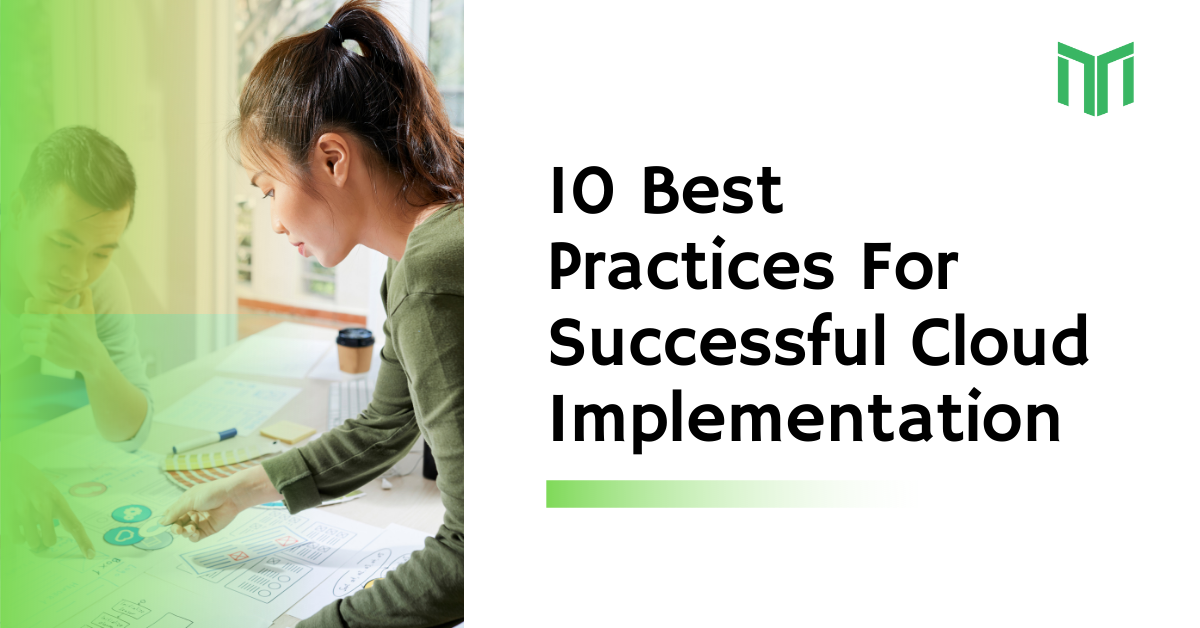As the benefits of cloud implementation become more evident, the rush to the cloud is gathering momentum.
Cloud helps businesses to create new, flexible operating models and infuse agility in order to obtain a competitive advantage in today’s fast-paced market.
Organizations must, however, conduct some thorough planning to ensure a seamless and effective adoption. The cloud journey can be time-consuming, costly, and resource-intensive.
Here are some recommended practices for making the most of a company’s cloud investment and implementation:
1. Make the Cloud Center of Excellence a reality.
Cloud projects, like any major IT investment, require a well-organized and well-directed team that knows the cloud adoption framework and can deliver cloud technology that is in line with the organization’s objectives. The Cloud CoE team is in charge of dealing with the financial, communication, technological, and operational issues that come with cloud implementation.
The cloud CoE team helps to accelerate cloud adoption by building momentum across the enterprise, providing reusable cloud governance frameworks, and aligning cloud products with the company’s vision.
2. Explore alternatives to tech.
Purchasing Infrastructure-as-a-Service (IaaS) from a cloud service provider isn’t enough for a successful cloud installation. Organizations should use cloud management platforms, governance and compliance monitoring tools, disaster recovery solutions, and expert services to guarantee a seamless and effective cloud rollout. Artificial and machine intelligence, as well as platform and software-as-a-service, should all be part of the cloud ecosystem.
3. Managing Cultural Change.
Cloud adoption necessitates a substantial transformation in IT culture. Cloud migration initiatives may be hastened while decreasing total change costs and boosting company agility when cultural transformation is properly supported and managed.
4. Transition in Phases.
Organizations must start with modest apps or use cases for a successful cloud implementation, then gradually transfer more and more applications to the cloud as they build organizational expertise. Start with the easiest-to-migrate services, such as public website hosting and email, then work your way up to databases, multitier platforms, and bespoke business apps.
5. Management of Expenses.
As companies examine use cases, their cloud plans must take into account the entire cost of cloud adoption and the best mix of cloud and on-premise data centers.
6. Data Management in the Clou.
Frequently, companies find retrieving data from the cloud more challenging than transferring it to the cloud, especially when cloud instances acquire a large quantity of data over time. As a result, they should guarantee that their data is moved to the cloud and that they have a disaster recovery strategy in place that incorporates cloud data management.
7. Model for Cloud Security.
To identify the security measures matched with the stated cloud framework, organizations must design a cloud security model. The model would aid in defining the cloud security measures that must be in place prior to cloud deployment.
8. Make sure you have a secure internet connection.
Cloud-native solutions demand a large amount of bandwidth, which can quickly exhaust a company’s Trusted Internet Connection (TIC). Ensure that your cloud service provider has extensive expertise virtualizing the TIC with the Office of Management and Budget (OMB) and the Department of Homeland Security (DHS).
9. Hybrid Privilege is a great way to get an edge over competitors.
Organizations must optimize traffic across a dispersed network that can span numerous internet Points of Presence to supply cloud-based corporate solutions (PoP). Organizations should use a hybrid edge strategy to link on-premise cloud systems with content delivery networks to guarantee scalable and elastic back-end computing.
10. Select the Most Appropriate Cloud Provider.
Selecting a trustworthy cloud partner might be advantageous if you discover you don’t have the requisite resources to undertake some of the needed evaluations and execute the implementation plan effectively during your cloud installation process.
The correct cloud services provider can assist you in doing crucial assessments, developing a solid cloud deployment plan, selecting the appropriate technologies, and executing a flawless move.
Are you willing to make the switch to the cloud? Make an appointment with a Tech Mentor cloud specialist now!
Your ITaaS journey is only as good as the managed service relationships you form, regardless of the size of your company.






